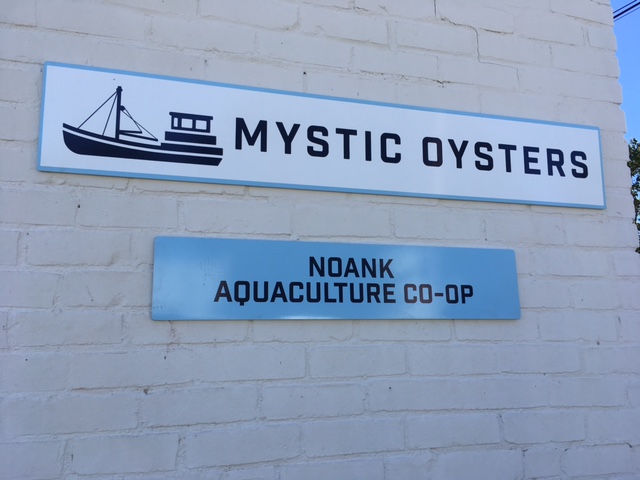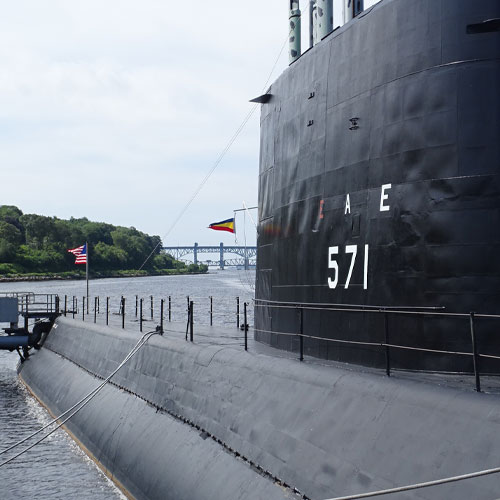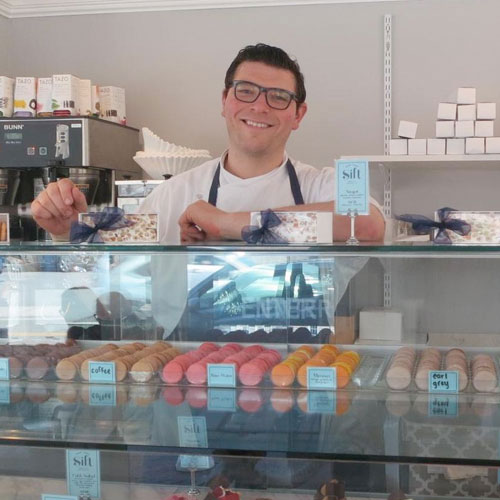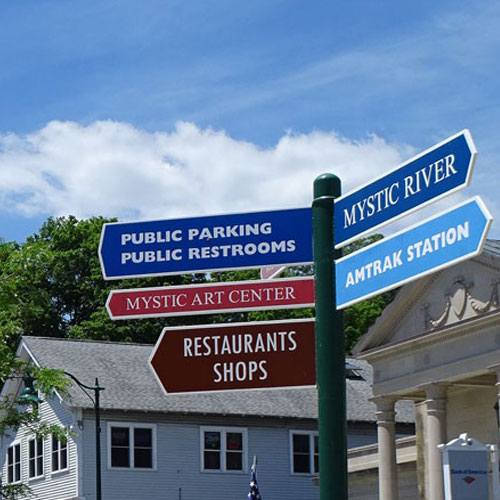Cooperative Leads with Environmental Stewardship & Provides Delicious Oysters in Groton

24 Sep 2019
Operating on the docks of Groton’s Noank village, the Noank Aquaculture Cooperative is cultivating oysters and growing the local oyster population. Their sustainable practices are providing East Coast customers with delicious oysters to eat, and locals with the opportunity to continue their traditions. Founded in 2000 by a group of Groton’s oyster farmers, it has since expanded to include members from Long Island, NY. Their goal is to work together to cultivate the finest oysters for the Northeast region.
Jim Markow and Karen Rivara, the owners of member-Aeros, created the cooperative so that Groton’s aquaculture businesses would have access to a working waterfront. Aeros invested funds to improve the dock and the building, which was originally built in the 1800s. Now, the building is used by three oyster farms: Aeros Cultured Oysters, Connecticut Cultured Oysters, and Stonington Shellfish Farms.
Noank Aquaculture Cooperative members are cultivating some of the finest oysters in the Northeast.
Mystic Oysters, the cooperative’s brand of oyster, has been gaining recognition as one of the best in the northeast.
The oysters are spawned in their Groton hatchery by creating the oyster lava, or spat, and then raising them until they are full grown. It takes about a year and a half to two years for one oyster to fully mature. From there they are harvested into the Groton coop, bagged, and sold all over the country. They offer wholesale and individual pricing for restaurants throughout the nation and there has been quite a demand nationwide.
Oysters are an important part of the natural ecosystem.
The Noank Aquaculture Cooperative also donates oysters for environmental use as a natural water filtration system. One oyster can filter up to fifty gallons of water in one day. The Cooperative plants some of their mature oysters at the bottom of the Mystic River to help aid the river in filtering the water. The oysters are also planted in the estuaries around the local Groton area, helping the local waterways stay clean and reducing the Cooperative’s carbon footprint.
The Cooperative also works very closely with the Groton Shellfish Commission - a volunteer-led initiative that among other things fills the local waterways with oysters and oyster seed.
The town of Groton has a recreational oyster program in which local citizens can purchase a recreational permit to go into the waterways to dig or rake for clams and oysters. This is a very big part of Connecticut’s local heritage. Working together, the Cooperative and the Groton Shellfish Commission is helping to keep that heritage alive.
Why the Cooperative chose to locate in Groton
In Groton, they found an ideal location that allowed for immediate waterfront access, along with a building that was sizeable enough to house the growing Cooperative. In addition, they were able to establish a critical partnership with the Groton Shellfish Commission - one that has helped them to achieve their goals as environmental stewards.
Employees of the Noank Aquaculture Cooperative also enjoy working in the town of Groton.
“The town of Groton is a really unique family. We really value the relationships we have in the town.” – Marc Harrell (Employee of Noank Aquaculture Cooperative)
The Noank Aquaculture Cooperative has taken a unique approach to business – one that enables their members to grow their businesses while simultaneously preserving the shellfish culture and using sustainable practices. This is a true example of a community-based business that benefits everyone from the local waterways, to families wishing to rake for clams and oysters to, the people that are employed and benefit from the jobs created. People in Groton are happy to have such a unique, caring, and sustainable cooperative located here.
To learn more about this unique business and their Mystic Oysters click here.
More Topics








